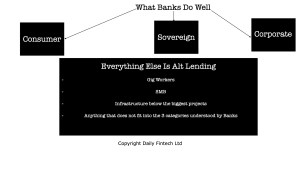 100vw, 300px” data-recalc-dims=”1″></a></p>
<p>The median of global <strong>Insurance Penetration</strong>, defined in terms of insurance premium as percentage of GDP, was <a rel=)
Every natural disaster discourse highlights the chasm between economic and insured losses. The same is true for shortfalls in pension levels compared to living standards that citizens expect. Insurance protection gap is the difference between the amount of insurance that is economically required and the amount of coverage actually purchased. Protection gaps differ widely, depending on the business line and market maturity.
Per Munich Re, the natural catastrophe protection gap (uninsured losses as a share of total losses) has narrowed over the past 30 years, from 78% to 70%, and from 0.3% to 0.2% of world GDP. Despite this improving trend, the gap remains massive, with only 30% of catastrophe losses insured. The following table on flood protection gaps, from a Lloyds underinsurance report, is a case in point.
The portion of insured economic losses varies significantly by peril. In USA, for instance, windstorm coverage is almost universal, while flood and earthquake are lower, as these perils are typically excluded from homeowner’s policies. In UK, coverage for natural catastrophes (storm, flood and earthquake) is universally provided.
Across various commercial lines, real estate has been among the best insured sectors globally with a penetration rate of 0.74%, followed by transportation and storage (0.6%) and agriculture, forestry and fishing (0.6%). Globally, the manufacturing sector has the lowest insurance penetration at 0.17%.
Property is most exposed to natural catastrophes and has a clear claims history, so more people are willing to buy insurance to protect their assets.
Global supply chains are particularly exposed to catastrophes – the 2011 Thai floods and the 2015 Tianjin Port explosion are examples. Insurance is accepted by the sector as an effective means of risk transfer. Agriculture, forestry and fishing have the third highest level of industrial insurance penetration. Crop policies are well established and leveraged by farmers who regularly face the risks posed by vagaries of weather.
A relatively newer indicator – the cyber protection gap – is large and estimated at about 90%. Studies put the annual global economic cost of cyber incidents at around USD 400 billion, almost 0.5 per cent of global GDP. Gross premiums for global cyber insurance are estimated at USD 3 to 3.5 billion annually.
Why is less insurance bought than is economically beneficial? The reasons have both demand- and supply-side factors. On the demand-side, affordability remains an obstacle primarily in developing and emerging markets. In addition, a lack of awareness stemming from poor financial literacy influences underinsurance, even in advanced economies. Product appeal and service quality are of high importance, more so in advanced insurance markets.
In developing markets, policyholder trust is particularly relevant, due to weaker legal and regulatory systems. Cultural and social factors also play a role, ranging from differences in risk aversion to behavioral factors. However, protection gaps do not only construe demand-side issues. Equally poignant are insurance market imperfections that dampen insurance supply. Transaction cost is a prominent example. In non-life insurance, about 30% of each premium dollar is absorbed by distribution and administrative expenses. While justifiable, this dents the economic appeal of insurance.
Closing gaps in insurance is easier said than done. For governments, this means collaborating with private sector experts to develop new insurance products. Carriers and insurtechs need to work together to share expertise and pool resources to create new solutions. All stakeholders need to decipher where underinsurance presents the greatest challenges and address with most appropriate solutions.
You get 3 free articles on Daily Fintech. After that you will need to become a member for just US$143 a year (= $0.39 per day) and get all our fresh content and our archives and participate in our forum.
- "
- 2016
- 39
- About
- addition
- address
- Adoption
- advanced
- Agreement
- agriculture
- All
- among
- annual
- Annually
- appeal
- around
- articles
- Assets
- being
- BEST
- Billion
- business
- buy
- carriers
- challenges
- chasm
- claims
- commercial
- content
- countries
- crop
- cyber
- day
- develop
- developed
- developing
- Development
- differ
- disaster
- distribution
- Dollar
- Early
- Economic
- Effective
- emerging
- EOS
- established
- example
- expenses
- expertise
- experts
- Face
- factors
- farmers
- financial
- fintech
- Free
- fresh
- gap
- GDP
- Global
- Globally
- Governments
- Growing
- High
- history
- HTTPS
- improving
- Income
- industrial
- insurance
- International
- issues
- IT
- large
- Legal
- Level
- levels
- Line
- manufacturing
- Manufacturing sector
- mark
- Market
- Markets
- money
- more
- most
- new solutions
- Other
- Partnership
- pension
- People
- percentage
- Play
- policies
- pool
- poor
- Premium
- private
- Product
- Products
- Profit
- prominent
- protect
- protection
- quality
- ranging
- reasons
- regulatory
- Resources
- Risk
- Said
- sector
- Sectors
- service
- Share
- So
- Social
- Solutions
- standards
- Storm
- Strategic
- studies
- supply
- Supply chains
- Systems
- time
- together
- transaction
- Trust
- Uk
- Universal
- USA
- USD
- WHO
- widely
- Work
- world
- worldwide
- year
- years






